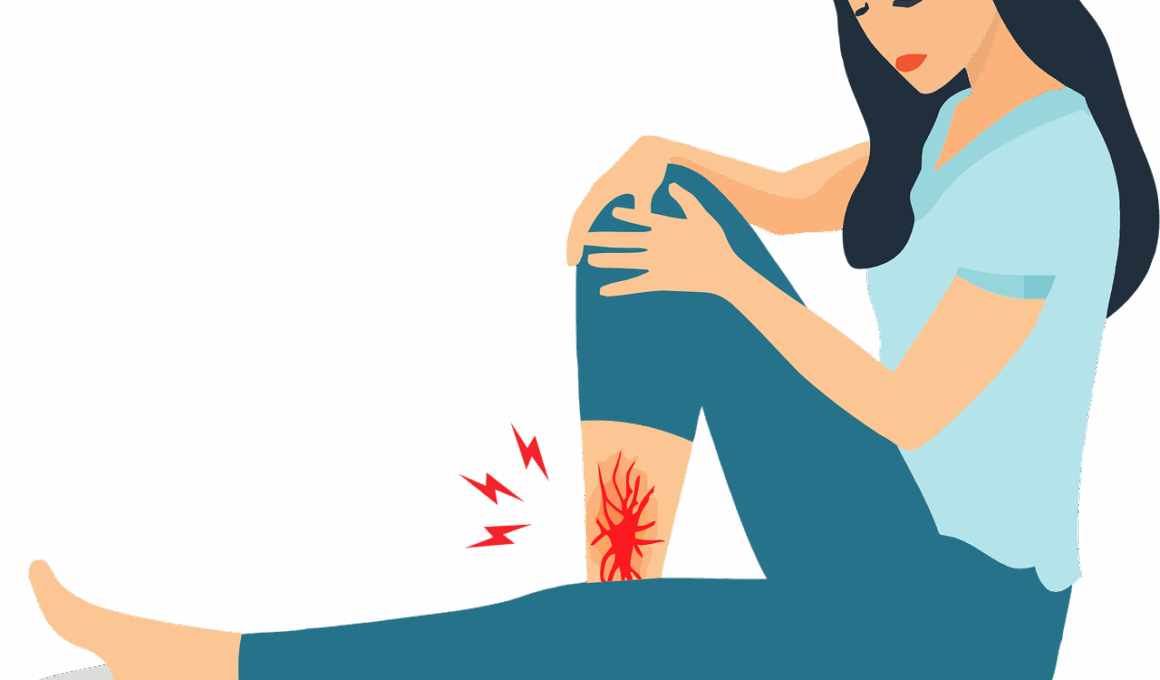Using Technology to Monitor and Prevent Repetitive Strain Injuries
Repetitive strain injuries (RSIs) are becoming increasingly common in today’s digital age, especially among professionals who spend hours on computers or performing repetitive tasks. These injuries can lead to chronic pain, decreased productivity, and significant medical expenses. Leveraging technology can be a game changer in monitoring ergonomic risks and preventing RSIs. Various devices and software are designed to help monitor an individual’s posture and adjust working conditions accordingly. For example, smart wearable devices provide feedback on users’ movements, alerting them to take breaks or adjust their posture. This feedback loop is vital for developing healthier habits, especially in sedentary work environments. Furthermore, software solutions can track time spent on tasks, helping individuals manage their focus and reduce strain. The integration of these technologies not only helps in prevention but also promotes recovery, creating efficient work environments. By utilizing innovative monitoring technology, individuals can significantly decrease the risk of RSIs and improve their overall wellness. Understanding how to effectively incorporate these tools is essential for enhancing workplace productivity and safeguarding years of health.
Recognizing the symptoms of RSIs early can significantly affect treatment and recovery, preventing long-term damage. Some typical signs include discomfort, stiffness, and occasional swelling in affected areas. Ignoring these symptoms can lead to chronic pain, impacting one’s ability to perform daily tasks. Here, technology can play a crucial role in both symptom recognition and management. Using wearable devices, individuals can log their symptoms in real-time, providing valuable data for healthcare professionals. This information can be beneficial for designing personalized treatment plans. Mobile applications are also available that employ algorithms to assess and provide feedback regarding posture and movements. This active monitoring creates a proactive approach to health, allowing users to modify their behaviors before issues escalate. Employers can also benefit from adopting such technologies, as they have the potential to reduce workplace accidents and associated costs. A safe, healthy workforce is paramount for business efficiency. Therefore, implementing these technological tools for symptom tracking not only maximizes individual health but also fosters a culture of safety and awareness within organizations.
Ergonomics and Smart Workspaces
Combining ergonomics with smart technology significantly boosts workplace safety and health, reducing the likelihood of RSIs. Ergonomic assessments, traditionally requiring expert evaluations, can now leverage smart technology to assess workspaces automatically. Tools like specialized software can analyze desk setups, recommending adjustments based on user input and data analytics. Moreover, ergonomic furniture designed with built-in technology can adjust automatically to align with the user’s needs, promoting proper posture and minimizing strain. For instance, height-adjustable desks allow workers to alternate between sitting and standing, offering a dynamic work solution. This flexibility helps keep the body engaged and reduces fatigue. Moreover, smart chairs equipped with sensors can notify users when they have been sitting too long or are slouching. By using these innovations, both employees and employers stand to benefit substantially. Beyond injury prevention, such improvements enhance overall productivity and retain talent. To make the most of these advancements, organizations should invest in training to ensure all staff understands the features available and how to use them effectively, empowering a healthier workspace environment.
Integrating recovery tools is equally important in mitigating the impacts of RSIs once they occur. A variety of mobile applications, physical therapy devices, and online resources exist to aid in recovery. These solutions embrace new technology to deliver personalized rehabilitation programs tailored to the user’s specific needs. For example, apps can guide users through exercises designed to alleviate tension and strengthen musculoskeletal areas prone to strain. Additionally, virtual reality (VR) technology is emerging as a powerful rehabilitation tool. VR experiences can simulate real-life activities, allowing patients to rehabilitate in a controlled yet varied environment, enhancing recovery rates. Furthermore, telehealth services make it easier for individuals to connect with healthcare providers for ongoing assessments without needing to travel. This flexibility can be crucial for those managing ongoing conditions. Education plays a vital role in recovery, as understanding the injury and treatment plan is transformative. Employing technology to facilitate both recovery and education ensures individuals are empowered to take charge of their health, ultimately leading to better outcomes and fewer recurrences of repetitive strain injuries.
The Role of Data in Prevention Strategies
Data analytics is becoming an essential aspect of preventing RSIs, providing insights into patterns and trends that can inform best practices. By aggregating data from wearable devices and workplace ergonomics assessments, organizations can identify risk areas and develop targeted interventions. This data facilitates a proactive rather than reactive approach, allowing for adjustments to be made before injuries occur. For instance, tracking the frequency of certain movements or the total hours worked without breaks can highlight behaviors contributing to strain. Organizations can then implement rotation schedules or mandatory breaks based on this data. Additionally, employee feedback can be collected and analyzed to understand what specific ergonomic changes may be necessary for optimal health. When employees feel involved in the process, they are more likely to follow these improvements, creating a collaborative atmosphere focused on wellness. This culture of safety not only benefits individuals but also fosters an environment conducive to productivity. Relying on real data keeps interventions relevant and effective as workplace dynamics evolve, ensuring that prevention strategies keep pace with emerging challenges.
Training and education about technology-assisted injury prevention are critical for success in the workplace. Employers must invest in comprehensive training programs that highlight the importance of ergonomic practices and the use of monitoring technology. Workshops should focus on how to assess one’s workspace for ergonomic safety, encouraging employees to actively participate in the evaluation process. Furthermore, understanding how to utilize wearable technology ensures that workers recognize its capabilities, empowering them to take responsibility for their well-being. Ongoing education can take various forms, including online tutorials, in-house seminars, or collaboration with health professionals. Moreover, promoting a culture of health where employees feel safe discussing RSIs and injury prevention fosters an open dialogue. Recognizing RSIs as a serious workplace concern can reduce stigma and encourage individuals to seek help sooner. This commitment from employers signals to employees that their well-being matters, enhancing retention and job satisfaction. Ultimately, a well-informed workforce that values health and safety can lead to sustained productivity and overall organizational success, positively impacting employee morale.
Future Trends in RSI Prevention
The future of repetitive strain injury prevention is promising, driven by advancements in technology and a growing understanding of ergonomic science. Innovations in artificial intelligence (AI) and machine learning can provide personalized insights regarding risk factors and suggest tailored interventions. As these technologies evolve, they can analyze vast amounts of data to create adaptive solutions. For instance, AI algorithms can learn an individual’s work habits and recommend personalized breaks based on optimal recovery periods. Additionally, the emergence of remote and hybrid work environments elevates the focus on injury prevention. Employers must consider new challenges as employees adopt diverse work setups at home or in varied locations. Smart health technologies are also advancing to integrate with telehealth services, providing seamless access to professional health advice. Furthermore, emphasizing mental wellness alongside physical health is becoming a key component of injury prevention strategies. As these trends gain traction, organizations that prioritize innovative health solutions will lead the charge in protecting their workforce and maximizing productivity. The commitment to embracing these advancements will be essential in fostering a healthier work environment for the future.
Ultimately, embracing technology to monitor and prevent RSIs is not just a passing trend; it is a necessary evolution in workplace wellness practices. The integration of innovative monitoring devices, ergonomic assessments, and data-driven strategies lays the foundation for a safer future in all industries. Employers benefit from decreased healthcare costs through lower injury rates, while employees experience enhanced overall health and productivity. Fostering a culture that values injury prevention will require ongoing commitment and education, but the benefits far outweigh the efforts. As businesses adjust to these practices, many will find that a proactive approach to health translates into a competitive edge in the market. Lower turnover rates and heightened employee satisfaction lead to long-lasting success and positive camaraderie among team members. The responsibility for injury prevention extends beyond individual practices and involves creating supportive environments where everyone can thrive. Therefore, combining technology with holistic health strategies is key. Continuous adaptation and investment in employee health will ensure that individuals can perform their best, ultimately leading to improved outcomes for everyone involved.


